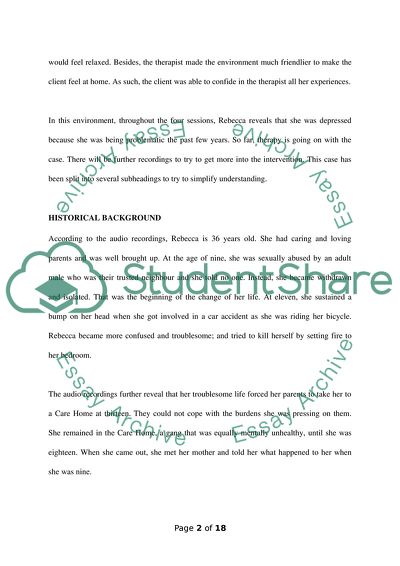Cite this document
(Integrative Counselling and Psychotherapy: The Case of Rebecca Study Example | Topics and Well Written Essays - 3500 words - 3, n.d.)
Integrative Counselling and Psychotherapy: The Case of Rebecca Study Example | Topics and Well Written Essays - 3500 words - 3. https://studentshare.org/psychology/1819504-case-study
Integrative Counselling and Psychotherapy: The Case of Rebecca Study Example | Topics and Well Written Essays - 3500 words - 3. https://studentshare.org/psychology/1819504-case-study
(Integrative Counselling and Psychotherapy: The Case of Rebecca Study Example | Topics and Well Written Essays - 3500 Words - 3)
Integrative Counselling and Psychotherapy: The Case of Rebecca Study Example | Topics and Well Written Essays - 3500 Words - 3. https://studentshare.org/psychology/1819504-case-study.
Integrative Counselling and Psychotherapy: The Case of Rebecca Study Example | Topics and Well Written Essays - 3500 Words - 3. https://studentshare.org/psychology/1819504-case-study.
“Integrative Counselling and Psychotherapy: The Case of Rebecca Study Example | Topics and Well Written Essays - 3500 Words - 3”. https://studentshare.org/psychology/1819504-case-study.


